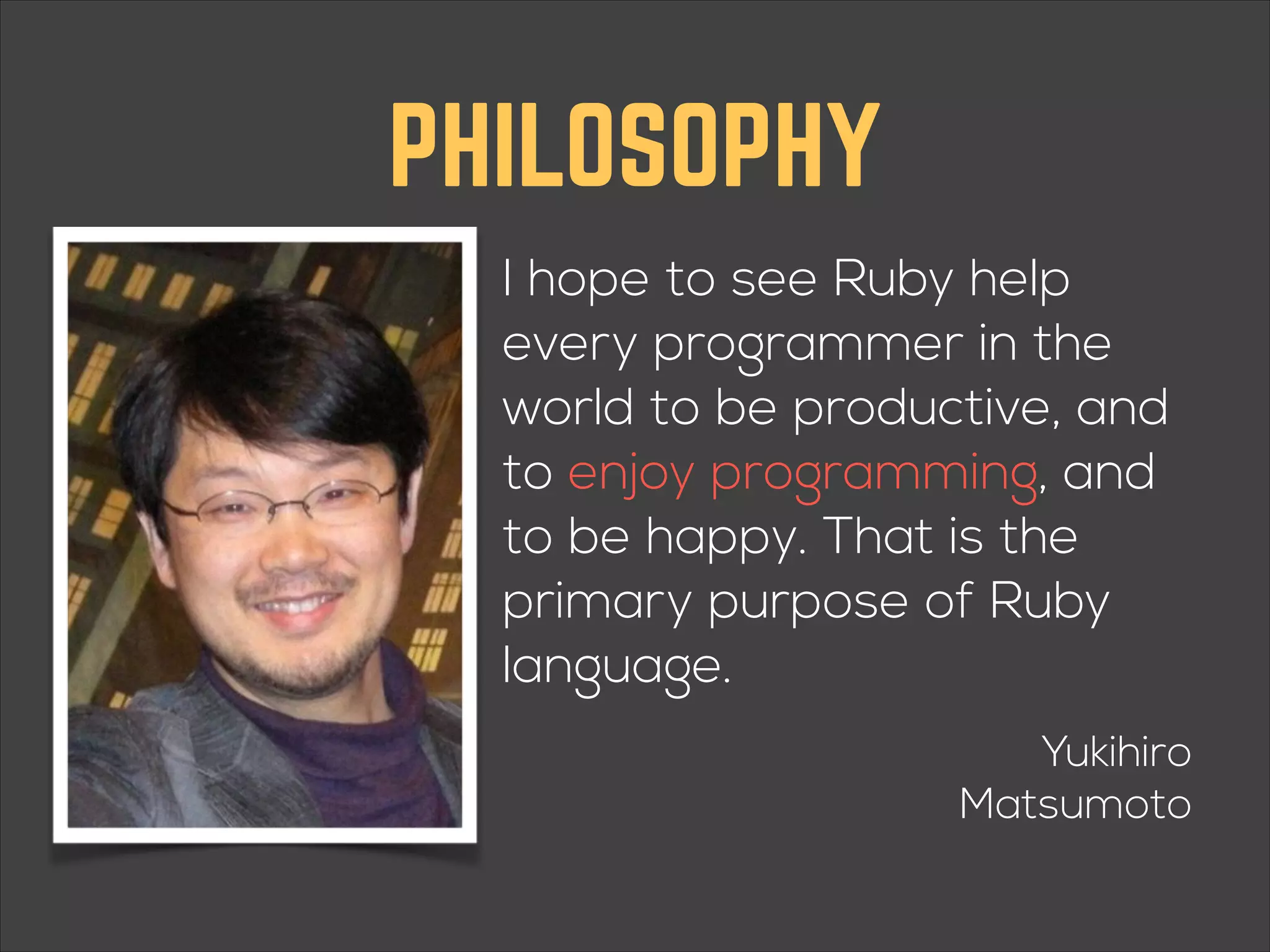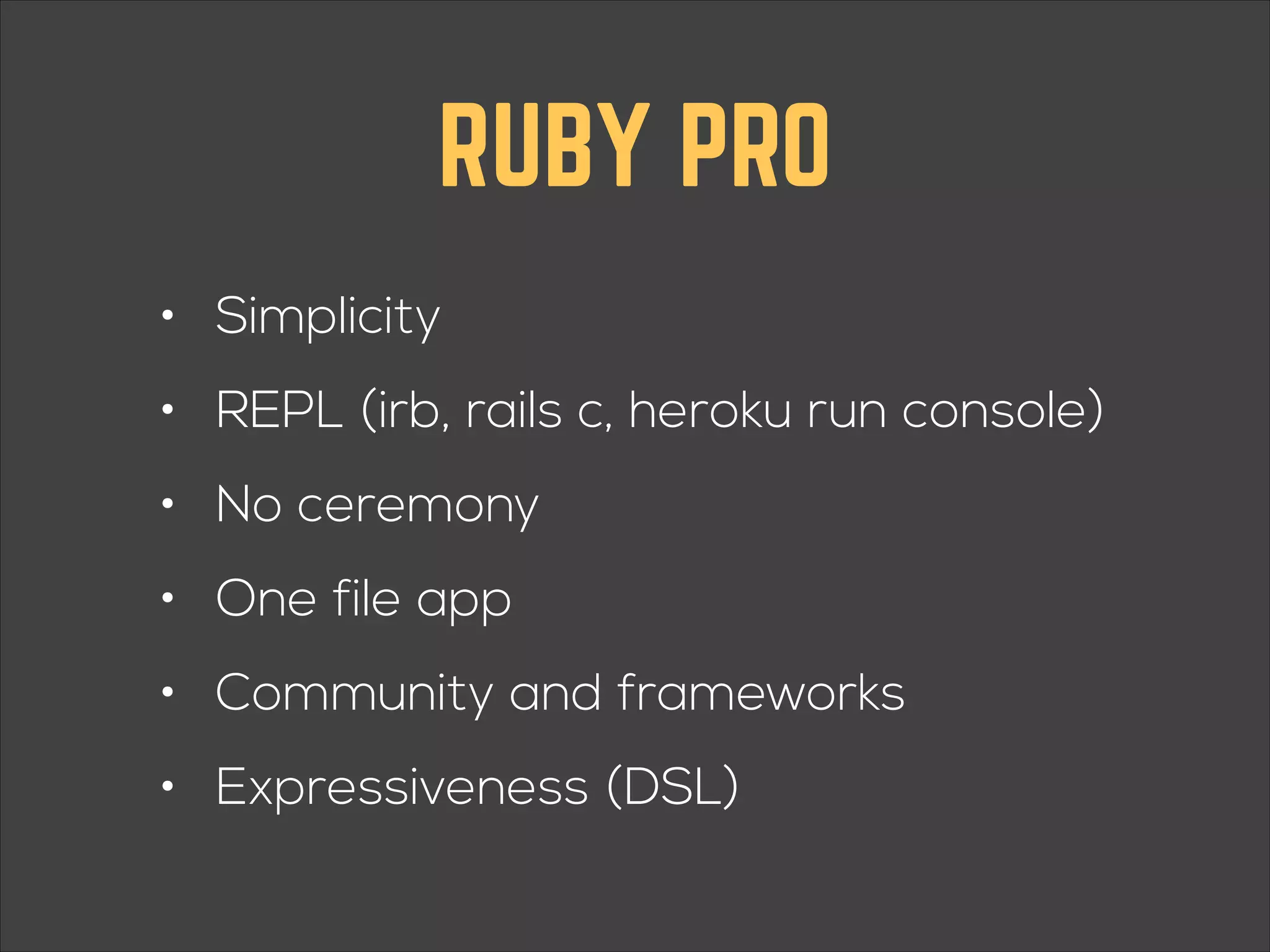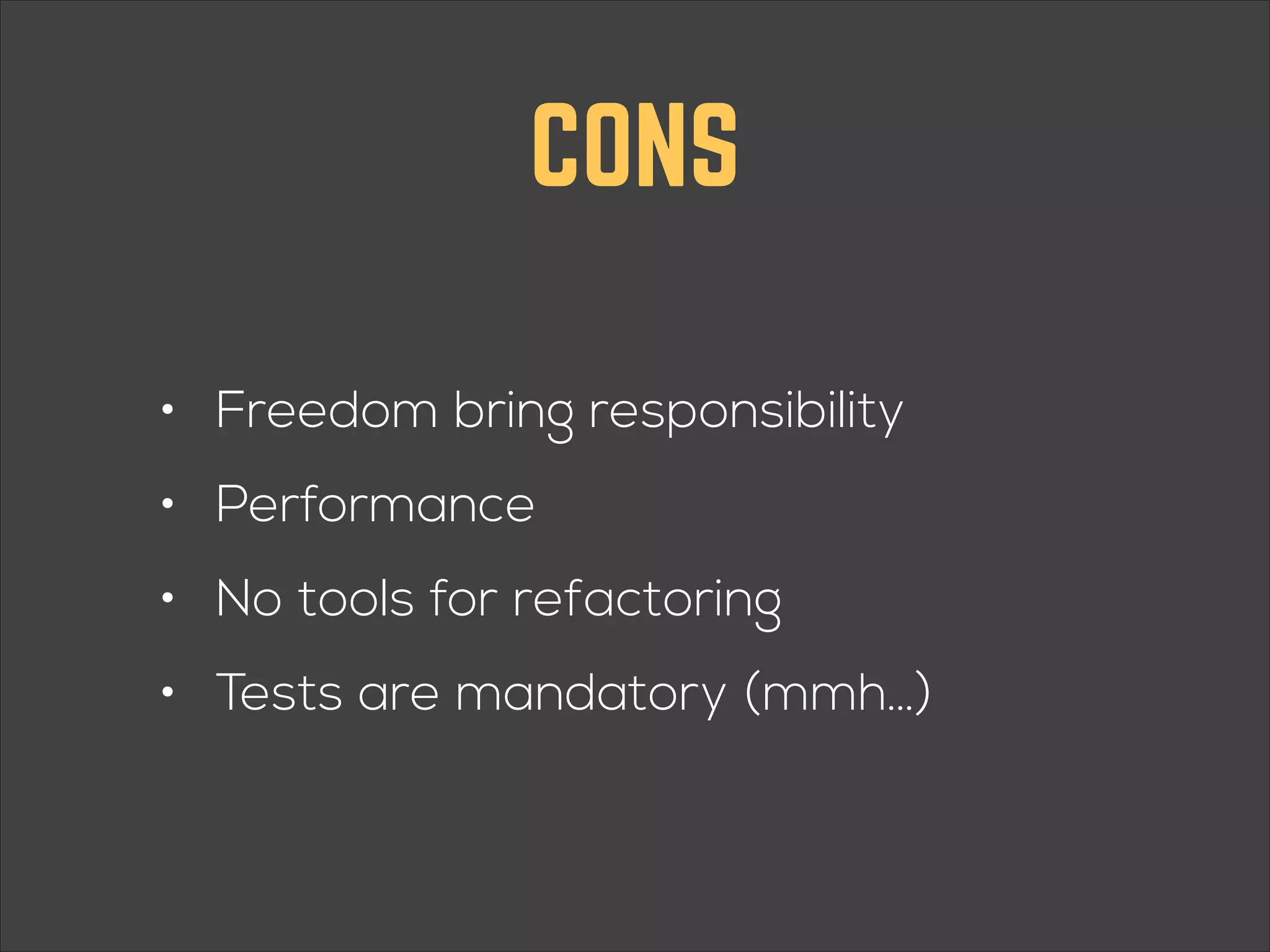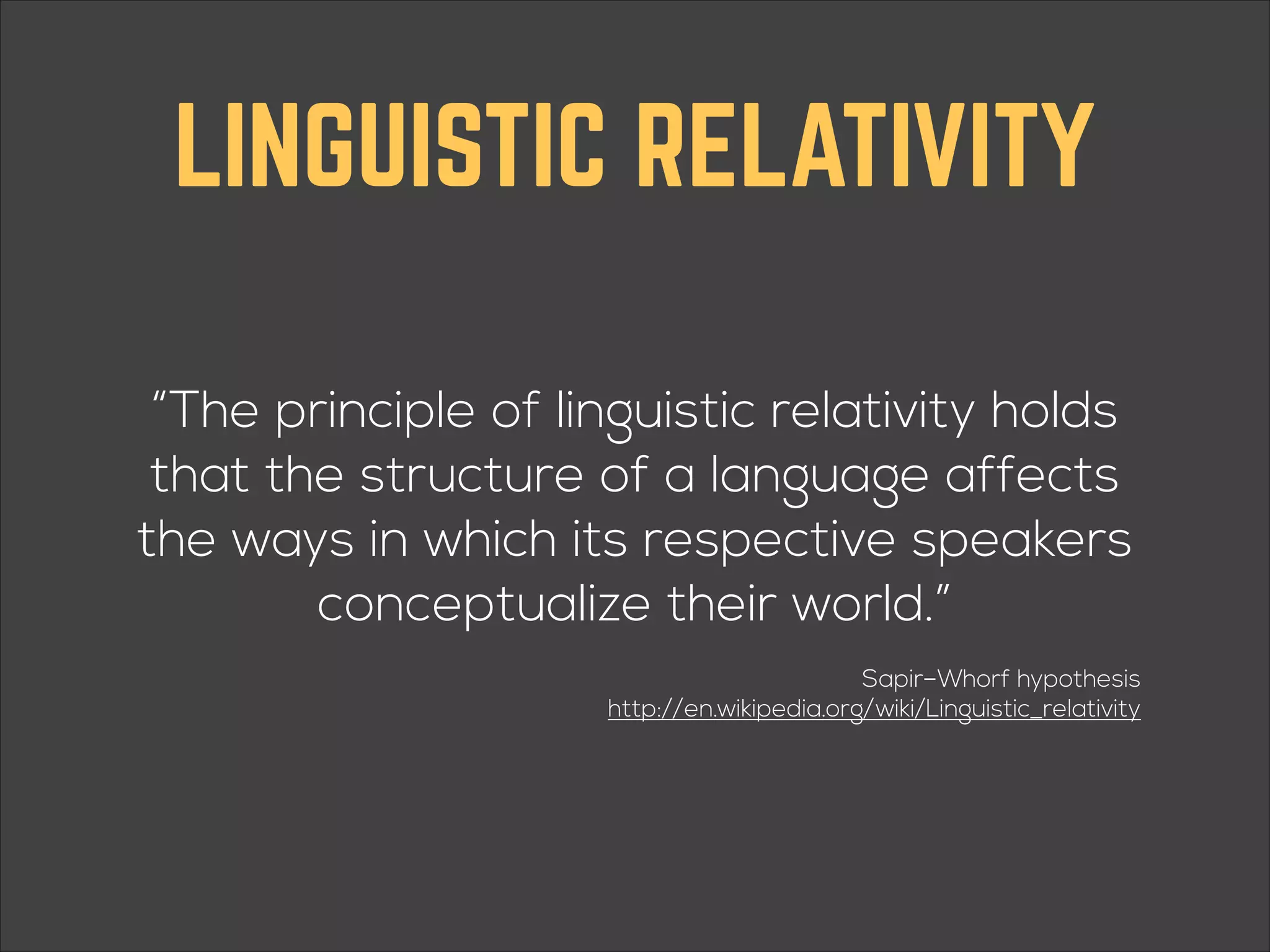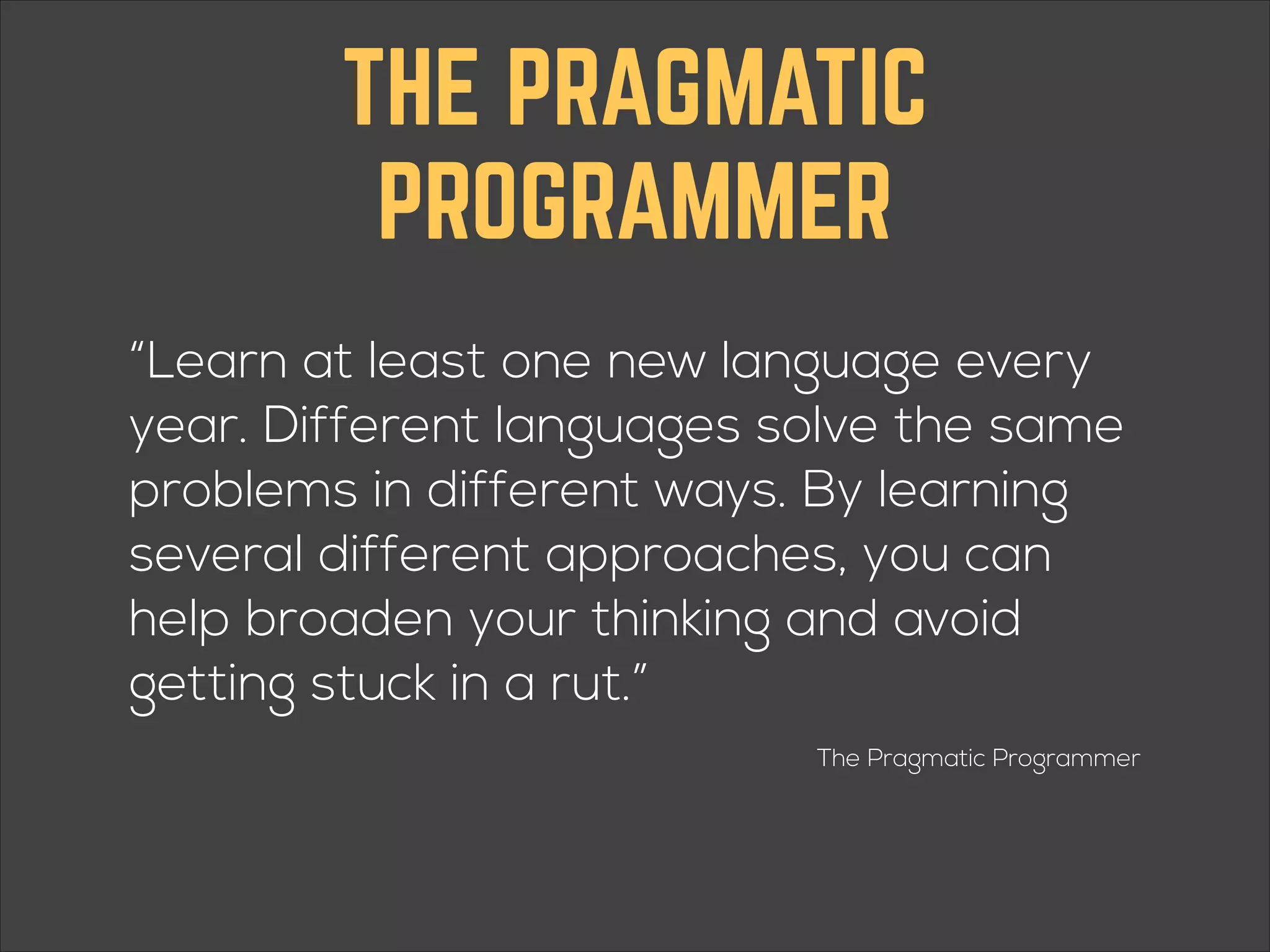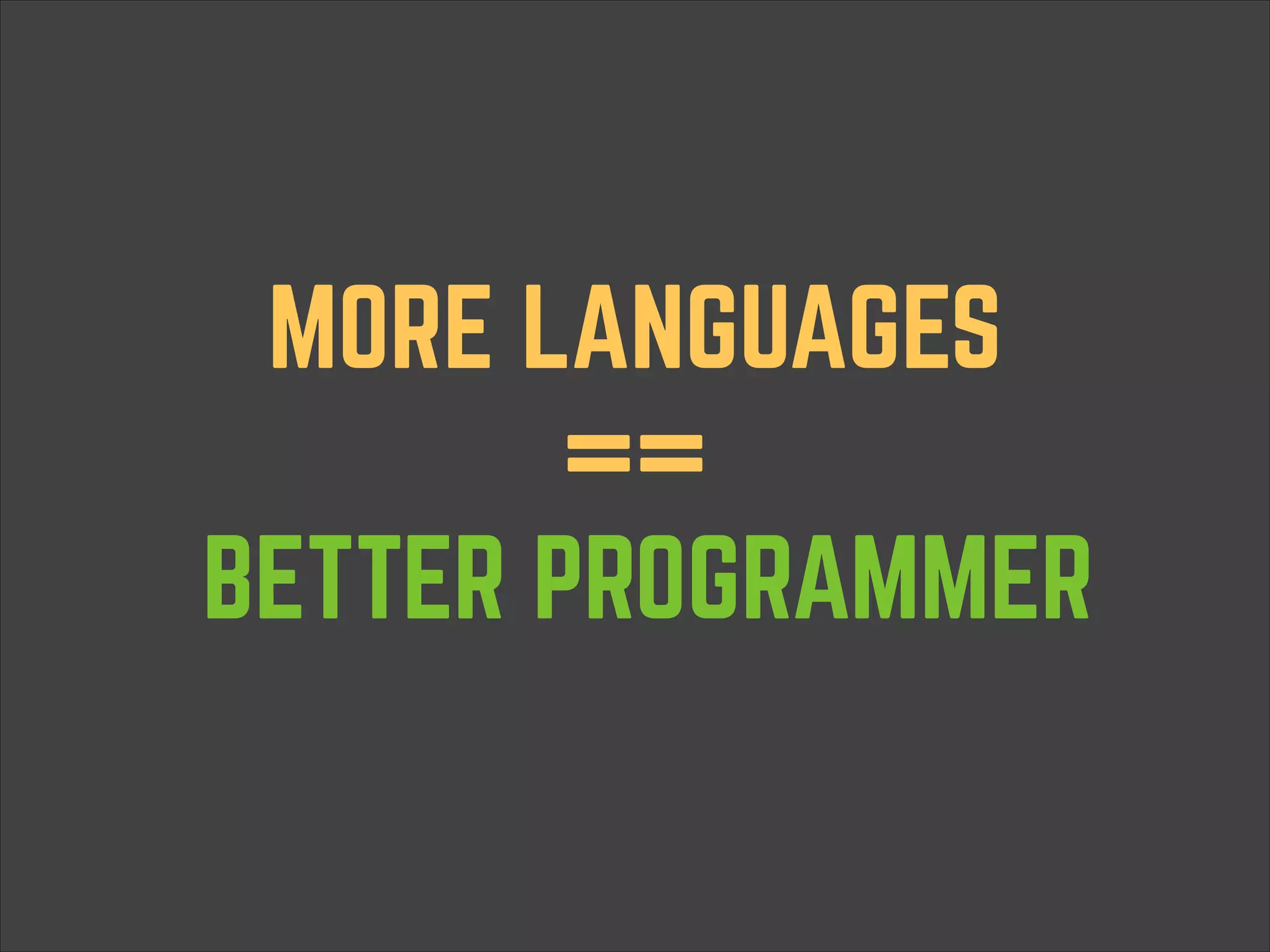The document contrasts Ruby and C# from the perspective of a software engineer, highlighting the strengths and features of both languages. It explores Ruby's dynamic, interpreted nature and metaprogramming capabilities while discussing C#'s compiled, strongly typed structure and object-oriented features. The author emphasizes the importance of language diversity in programming as a way to enhance problem-solving skills.


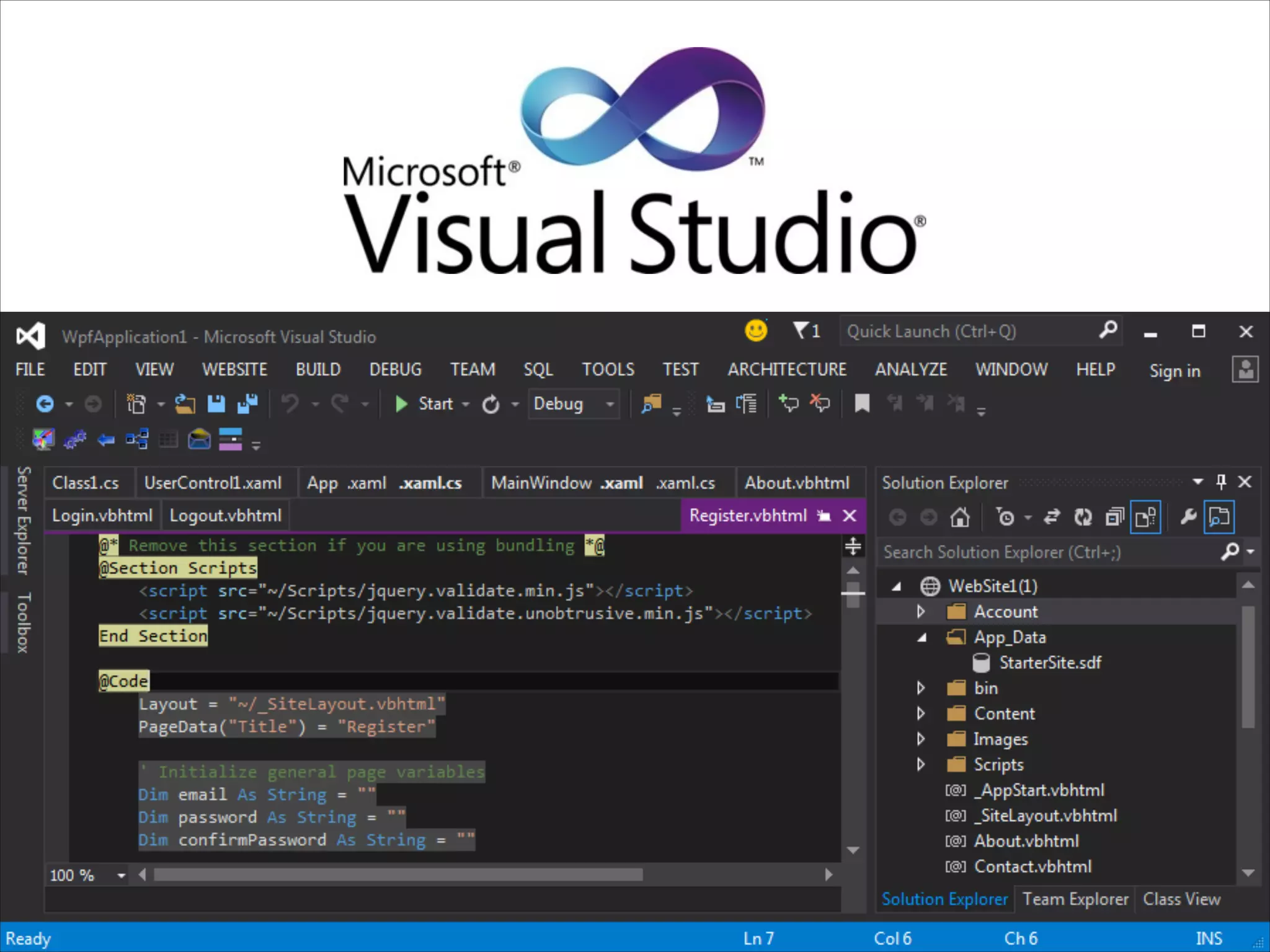








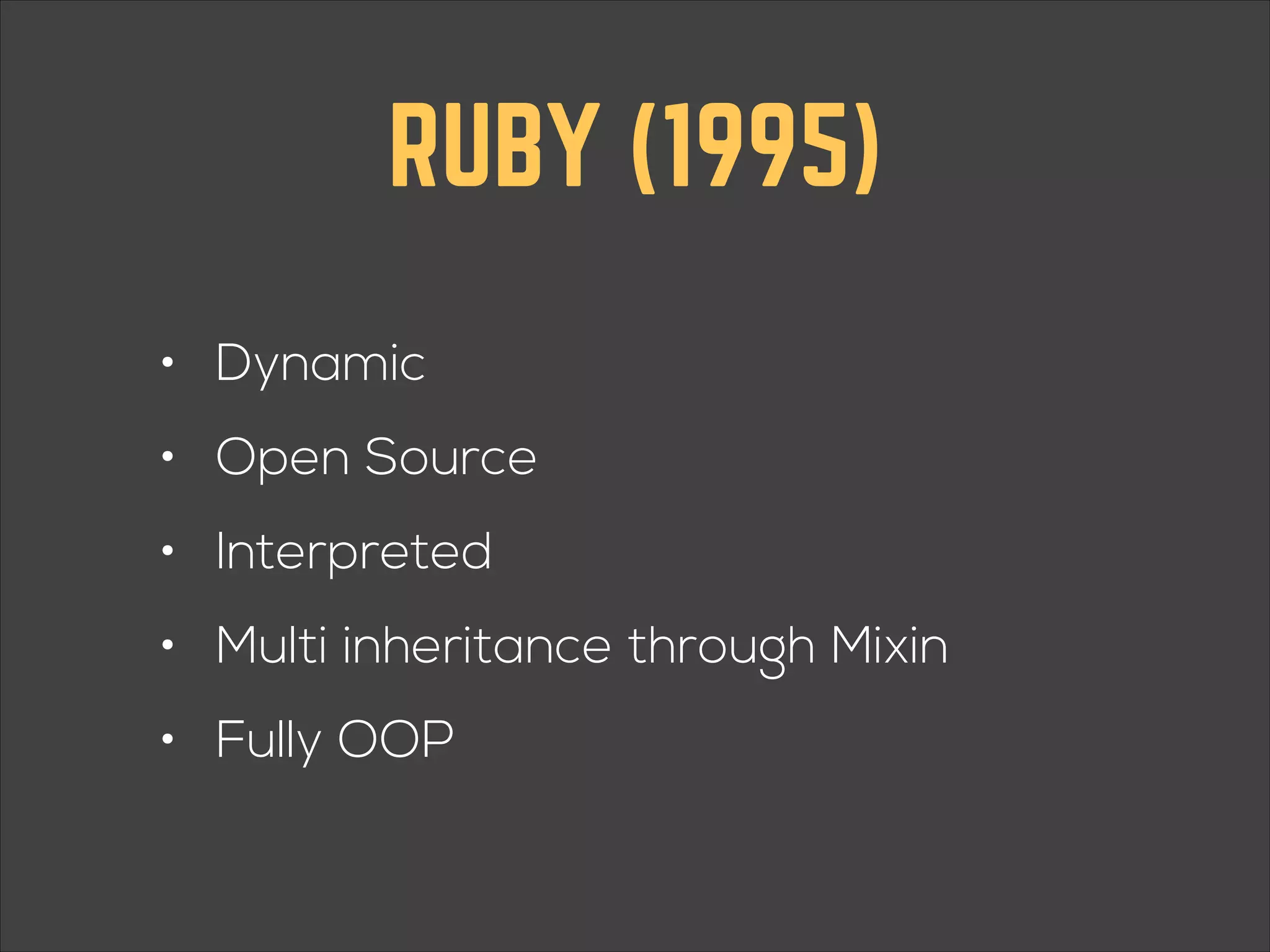

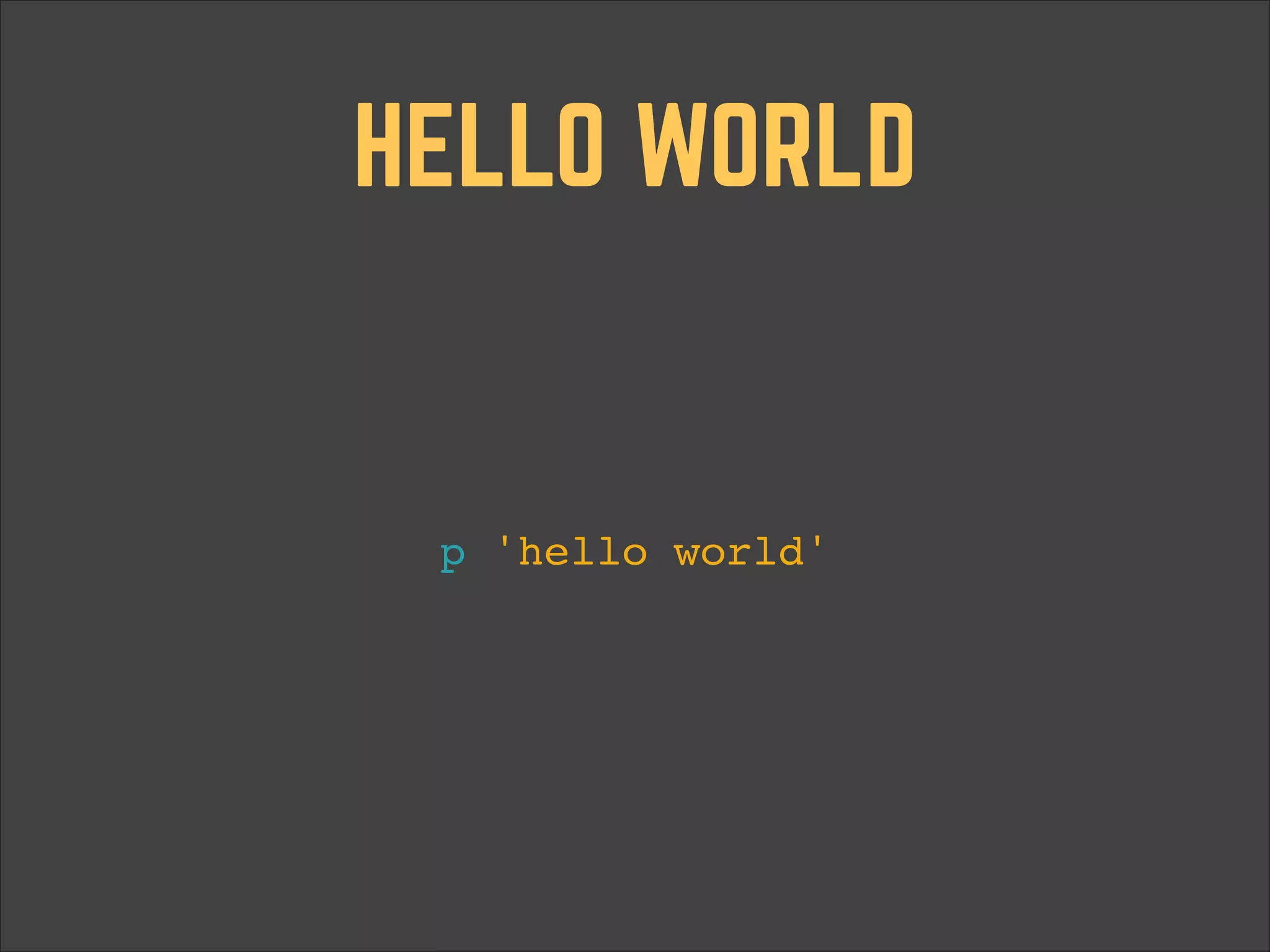




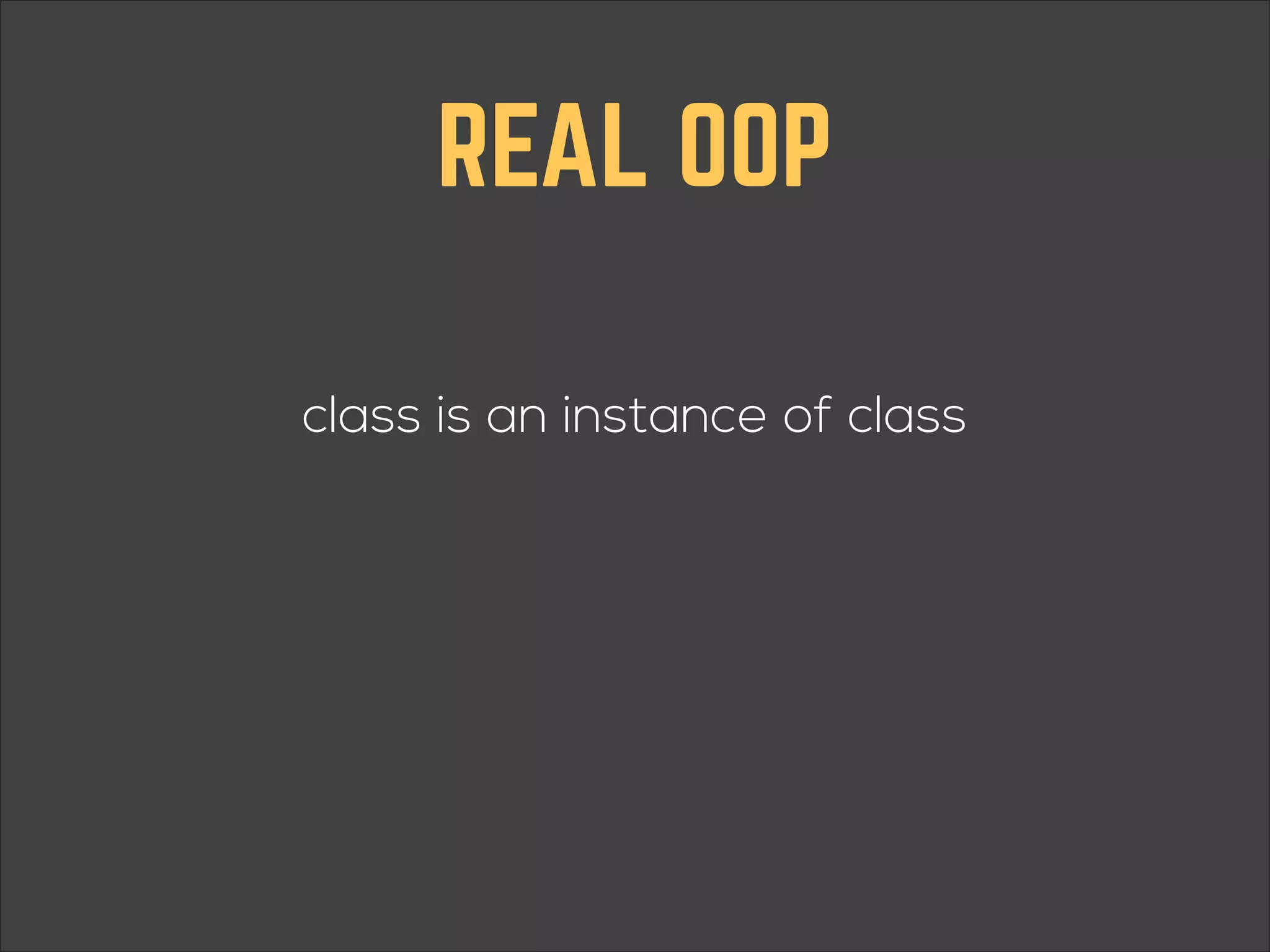

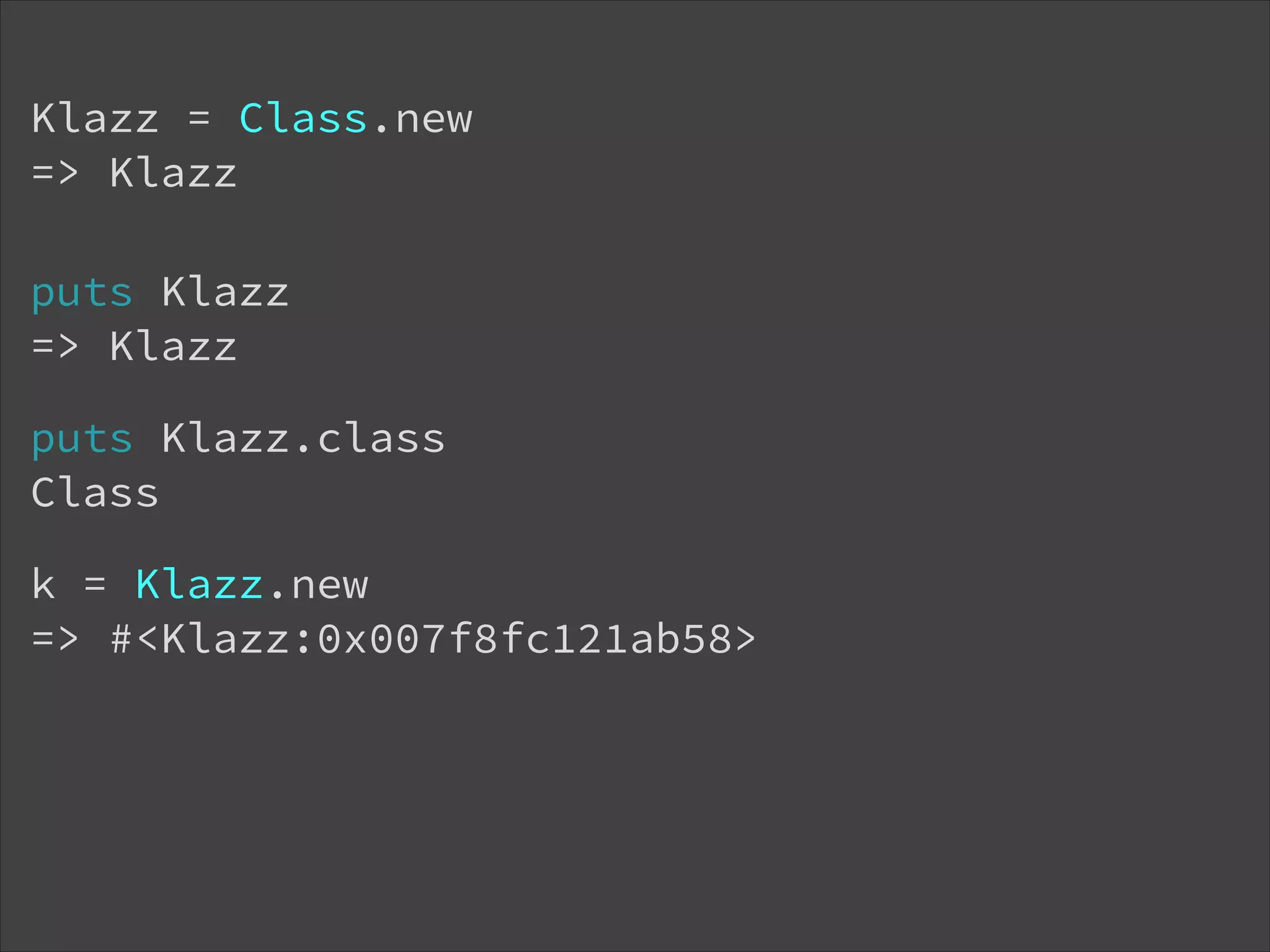


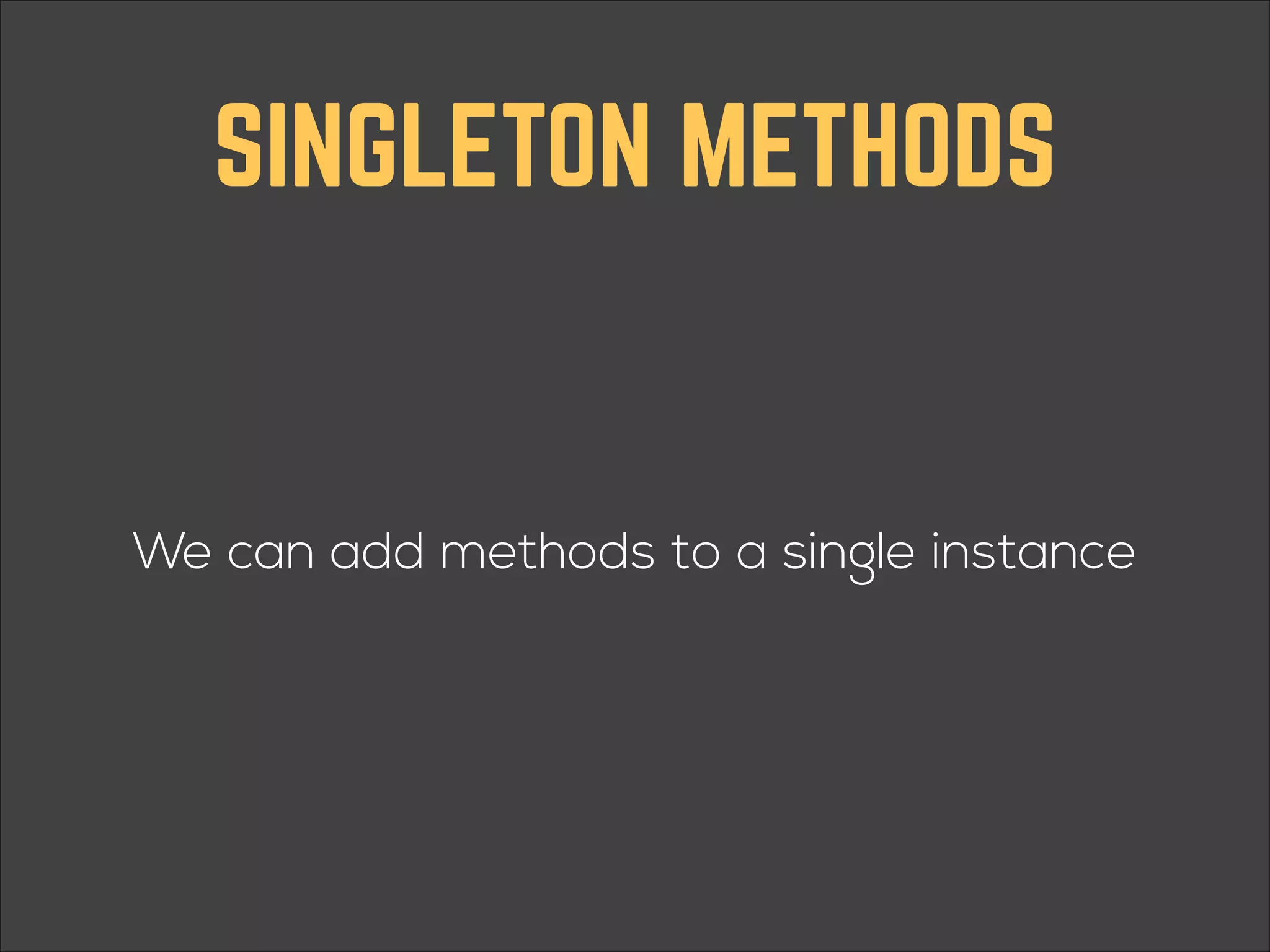
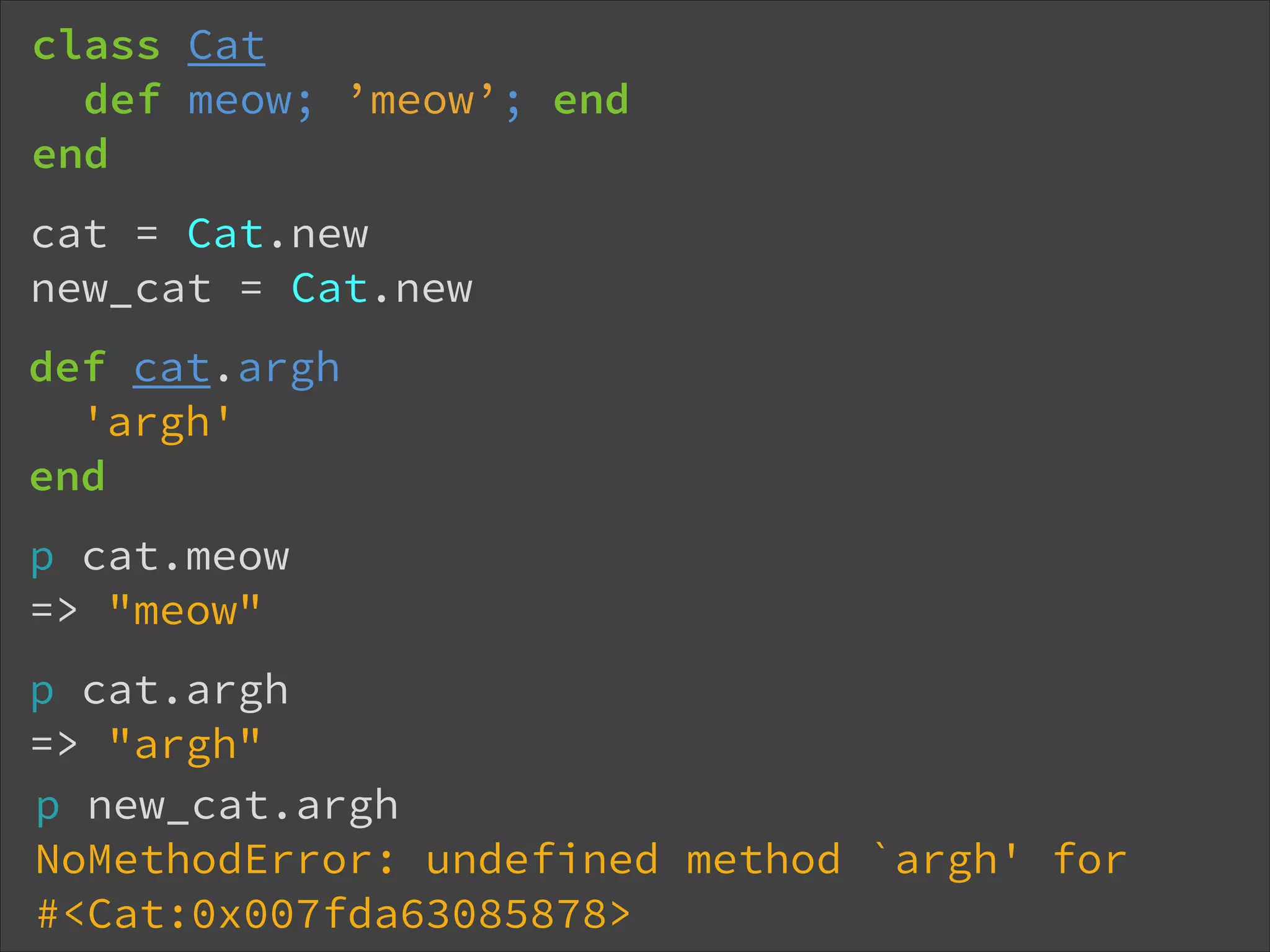




![monkey patching “a way to extend or modify the runtime code of dynamic languages [...] without altering the original source code.”](https://image.slidesharecdn.com/rubyvscsharp-131209050127-phpapp01/75/Ruby-seen-from-a-C-developer-30-2048.jpg)

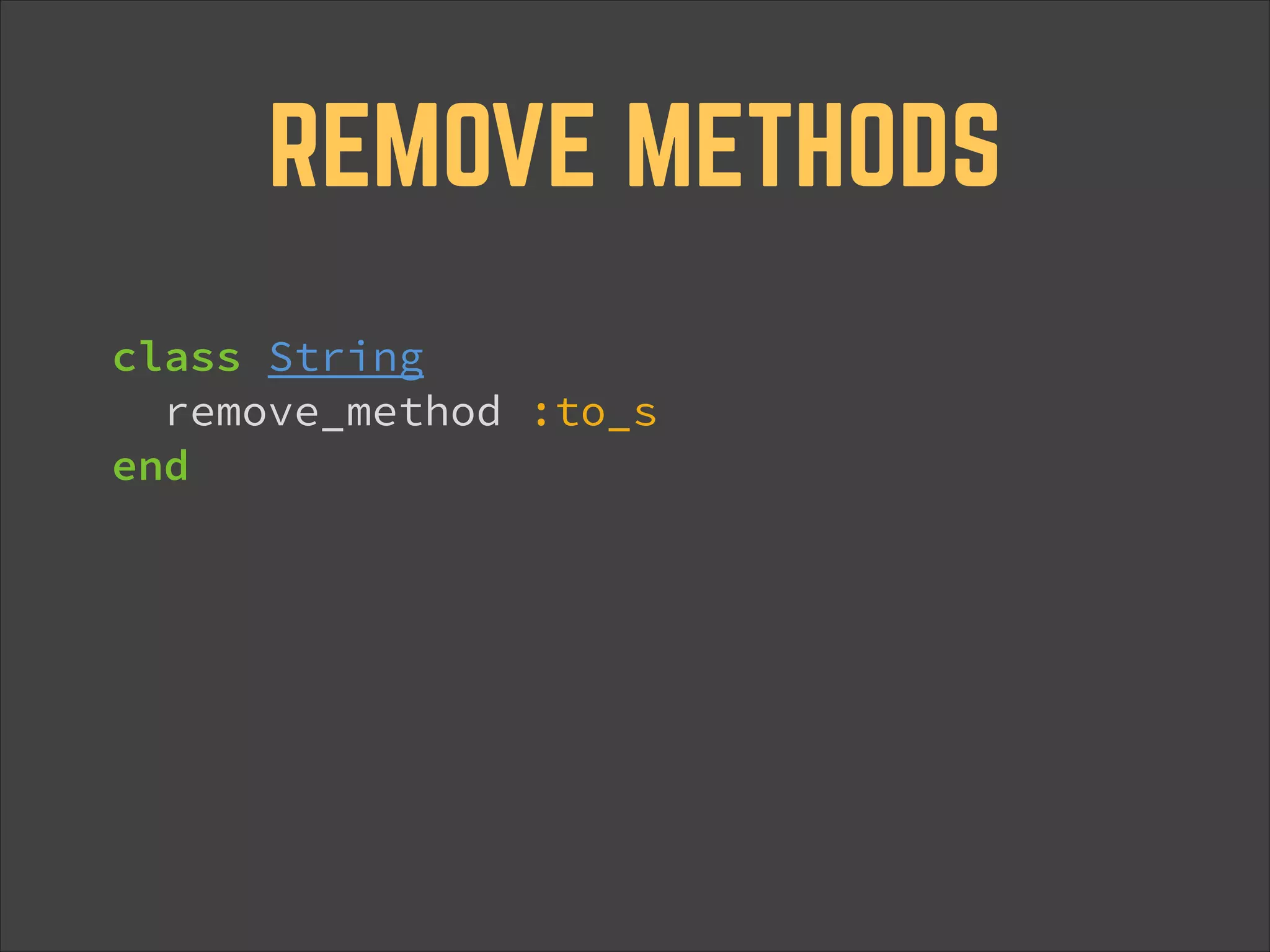


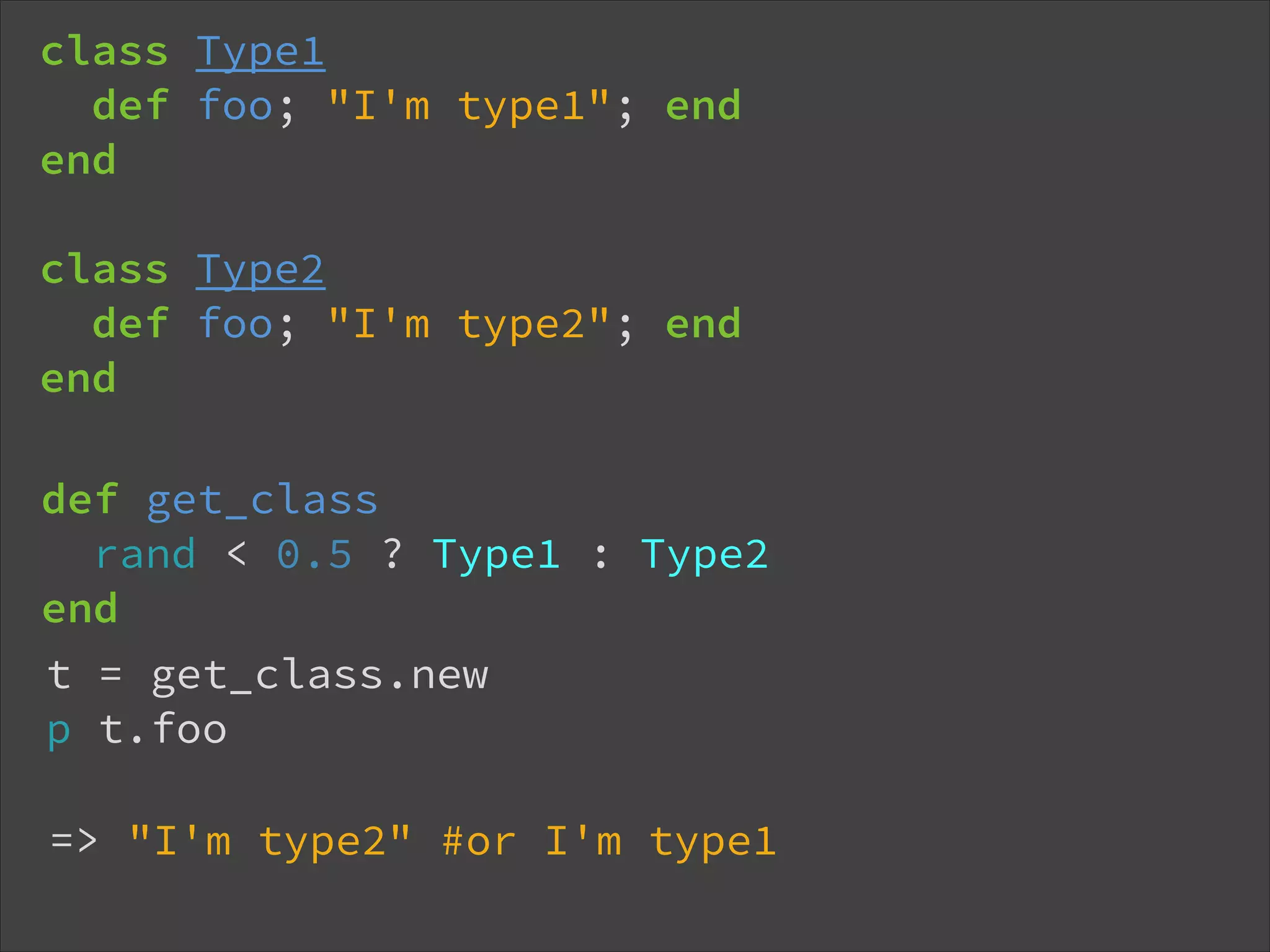
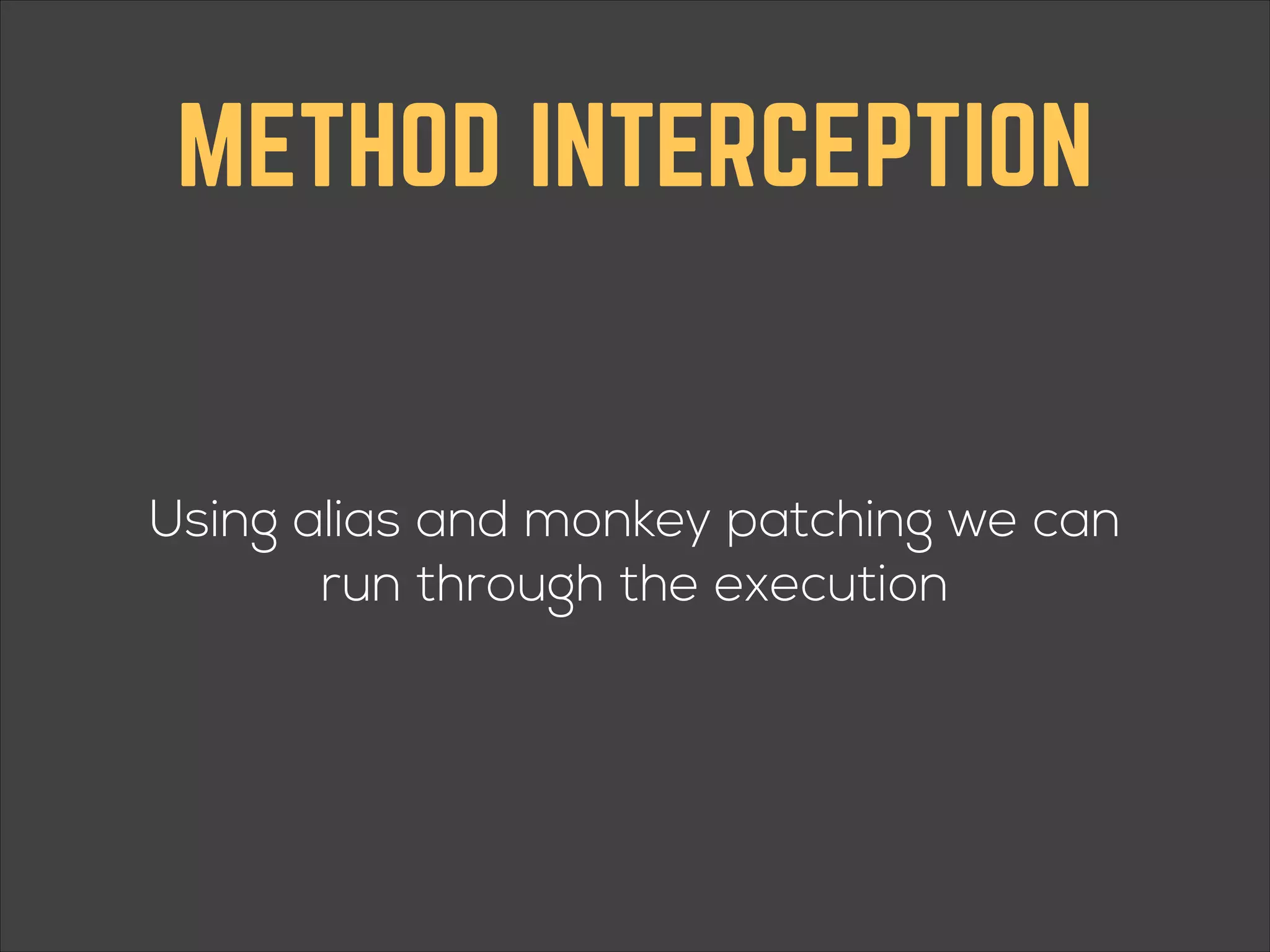

![METAPROGRAMMING Metaprogramming is the writing of computer programs that write or manipulate other programs (or themselves) as their data […] http://en.wikipedia.org/wiki/Metaprogramming](https://image.slidesharecdn.com/rubyvscsharp-131209050127-phpapp01/75/Ruby-seen-from-a-C-developer-38-2048.jpg)

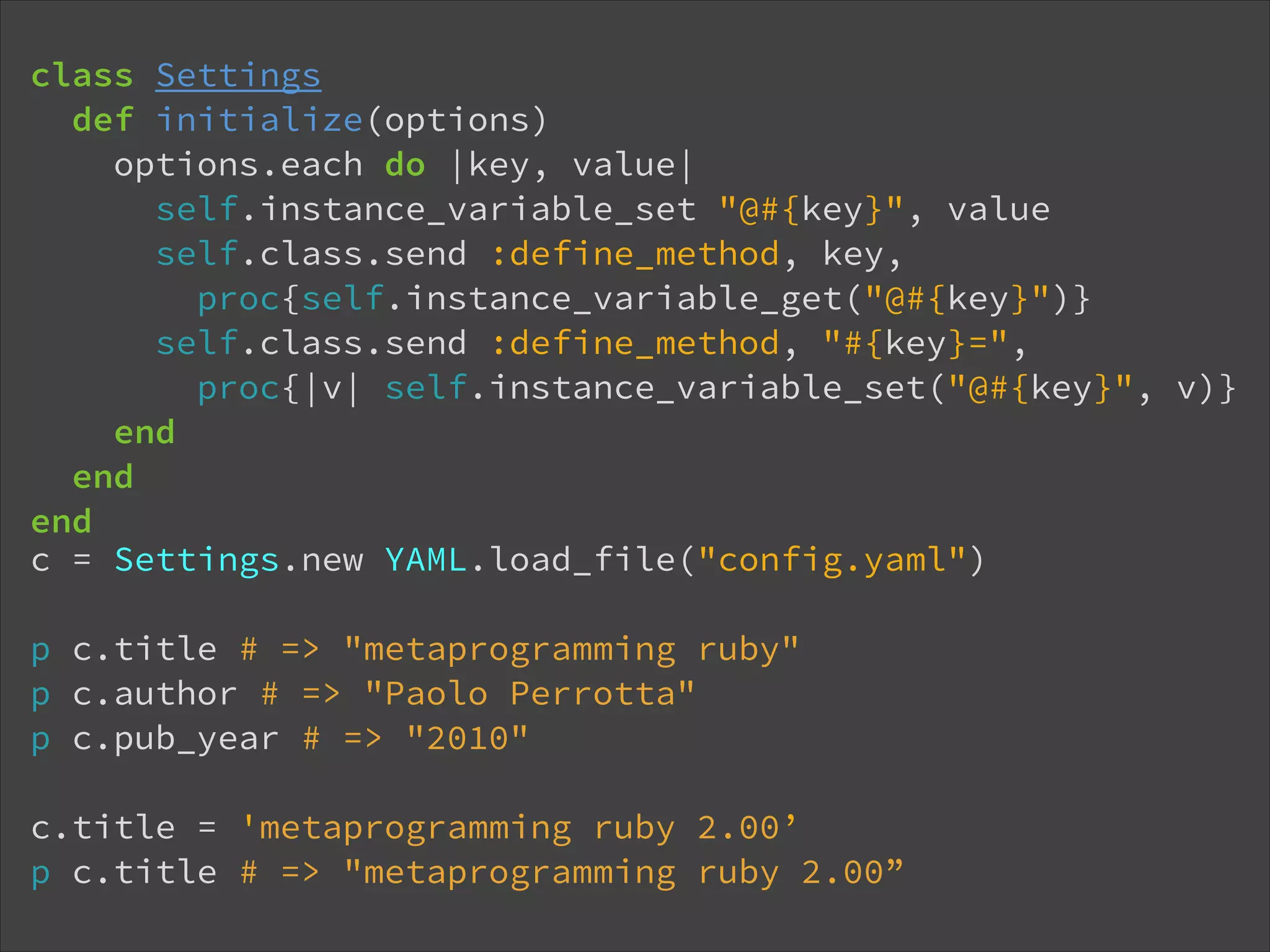


![BUT THERE’S MORE > [1, 2, 3] * 3 == [1, 2, 3, 1, 2, 3, 1, 2, 3] > 1_000_000 > a = a || [] > a = [1,2,3]; a[-1] > [1,2,3].shuffle > (0..9).each { ... } > 3.times {...} > def name=(value); ...](https://image.slidesharecdn.com/rubyvscsharp-131209050127-phpapp01/75/Ruby-seen-from-a-C-developer-43-2048.jpg)
